[‘Japanese Peonies’ (undated), Alma-Tadema]
I’m sure they were pæonies (from the Latin Pæonia), not peonies, when I was growing up. I don’t know when the dipthong disappeared, but I imagine obsolescence was accelerated when everyone realised that typing æ or œ on a phone or keyboard requires a tiny bit of effort.
[THIS colour]
When I was very young, we had a single peony plant in our back garden. Each May, it produced a small number of amazing flowers in the most gloriously deep raspberry pink/red, a colour I have adored ever since. But we were under strict orders to never, ever pick the flowers. It just wasn’t the done thing, then, and no-one grew peonies to cut (not in Stockport anyway). So I had to admire them from a distance, and was not best pleased when my landscape architect brother decided they didn’t fit into his new design for the garden (neither did the lilac and laburnum - not sure what he had against flowering shrubs and trees).
[finally unleashing my latent peony-picking enthusiasm]
When we lived in Germany, though, peonies were everywhere at the flower stalls. I have very clear memories of feeding Tom and Alice over a series of warm nights during a very hot May and gazing in wonder at a vase of huge, gorgeous peonies, my very first, by the light of the moon, and wondering if Tom and Alice would ever co-ordinate their waking-up times.
[‘Peonies on a Small Pedestal’ (1864), Manet]
I love peonies partly because they are the antithesis of tulips: extravagant in size, ridiculously fluffy and frilly, with millions of petals which, when the flowers go over, suddenly drop like the needles of an old Christmas tree.
In addition to my favourite raspberry sorbet colour, they also come in lovely milkshake shades of white, pink, yellow and coral. They look floppy, but are in fact sturdy with firm stems, easy to pick, easy to arrange, easy on the eye.
[‘Les pivoines’ (undated), Renoir]
Peonies are sensuous flowers, which is no doubt why they appealed to Renoir with his peachy-pinky palette and preference for blooming young girls and blowsy flowers, the two almost interchangeable in his paintings.
[the epitome of blowsiness, chez Alice]
It’s interesting that the adjective blowsy (not blousy), so often applied to flowers such as peonies, can be actually quite derogatory, suggesting a sloppy, unkempt and untidy appearance. Dickens knows this when he describes the older Flora Finching, once girlishly attractive, now middle-aged, in Little Dorrit. “Flora, always tall, had grown to be very broad too, and short of breath; but that was not much. Flora, whom he had left a lily, had become a peony; but that was not much. Flora, who had seemed enchanting in all she said and thought, was diffuse and silly. That was much. Flora, who had been spoiled and artless long ago, was determined to be spoiled and artless now. That was a fatal blow.” Poor Flora.
[]Roses, Peony, Auricula and Fritillary in a Vase’ (c1770), Jan van Os]
Peonies fit beautifully into Dutch flower paintings, where they are held in their full glory forever. As with tulips, I always have a mad, irrational belief that when they reach the point of maximum beauty, the flowers will stay like this for all time. But, as Mary Oliver writes in ‘Peonies’, it’s not going to end well.
Do you also hurry, half-dressed and barefoot, into the garden,
and softly,
and exclaiming of their dearness,
fill your arms with the white and pink flowers,
…their honeyed heaviness, their lush trembling,
their eagerness
to be wild and perfect for a moment, before they are
nothing, forever?
I haven’t quite rushed out to pick peonies in my nightie, but I have been filling my arms with them in the PYO peony fields at Bury Lane Farm. Peonies, peonies, peonies as far as the eye can see, planted in long rows by colour, some already with heavy, fully open flowers,
others presenting ‘‘a wealth of globèd peonies” as Keats wrote in ‘Ode to Melancholy’ (not letting us forget that they are the epitome of “Beauty—Beauty that must die”). The farm has a pictorial guide to which flowers to pick - if you pick too early, they won’t open - so we have become experts in assessing globèdness potential. They need to be smooth but not too firm, slightly yielding to the touch, balls of petals for them to burst out, not all creased like poppies, but fulsome, smooth, and satiny.
Peonies have such a short season, just two to three weeks, that we may have gone a little wild. Still, we picked enough to make big bunches for the Brockets,
and more to take with us to Hay-on-Wye (plus jug, as I’ve found that you just can’t rely on there being a decent peony vase in an Airbnb place. I know, I know, would give a five star review if only the peonies had been catered for, etc).
It’s now nearly all over bar the shouting, and we had one last picking session yesterday, so I will be able to revel in the sheer size, voluptuousness, and gentle scent of peonies a little while longer.
[‘Pæonia’ (2002), Emily Patrick]
Then it’s back to 49 or 50 weeks of having to enjoy the permanent variety of peonies in paintings by Fantin-Latour and Emily Patrick, in Kaffe Fassett’s needlepoint cushions (done by someone else), and Philip Jacobs’ ‘Brocade Peony’. Or maybe I’ll go back to making tissue paper peonies, like I did when I was a teenager, and banned from picking in the garden.
Happy Sunday!



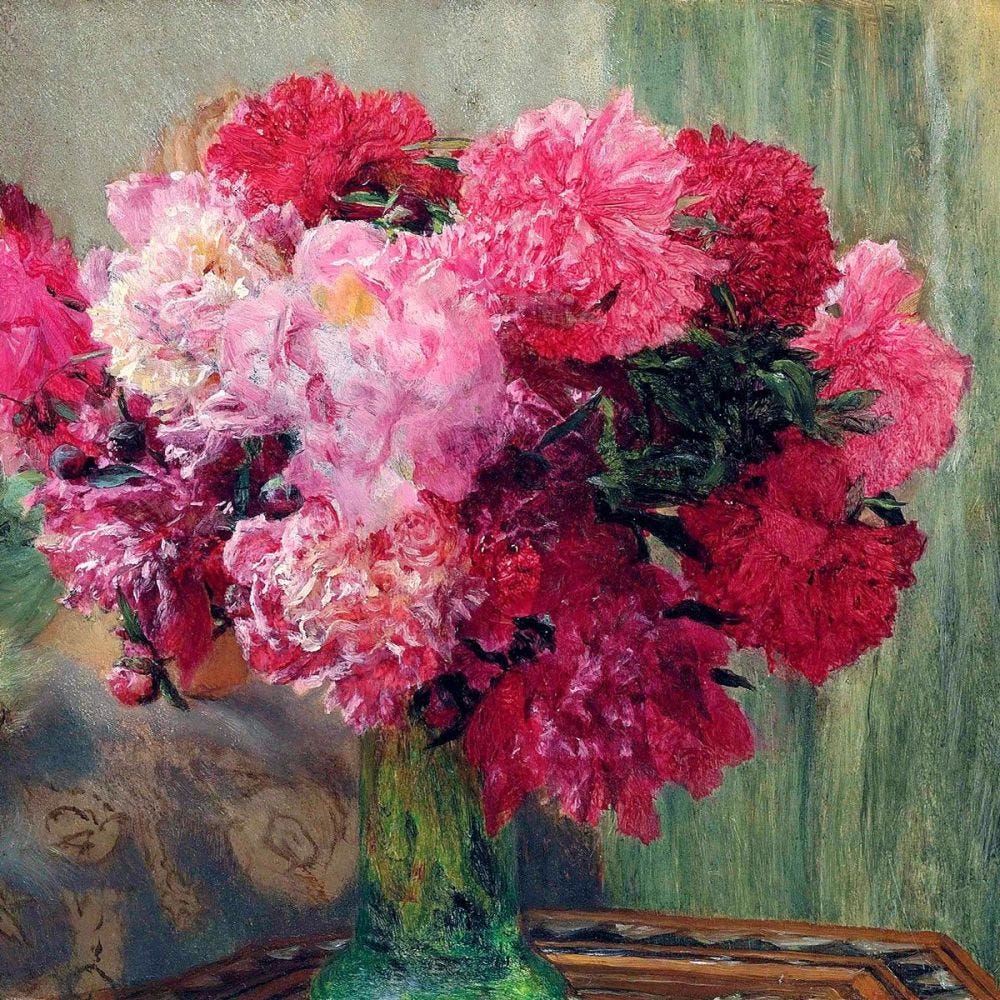
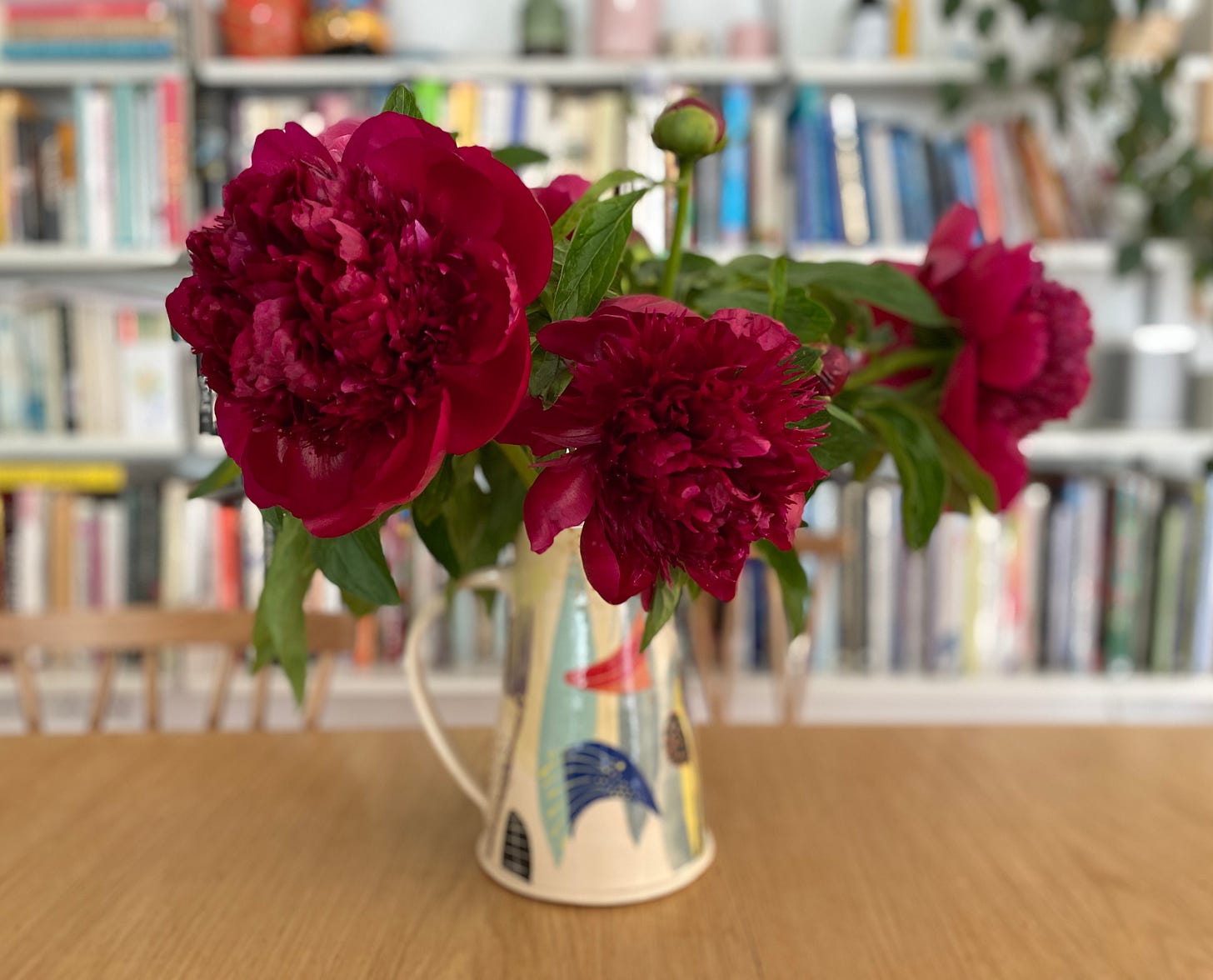

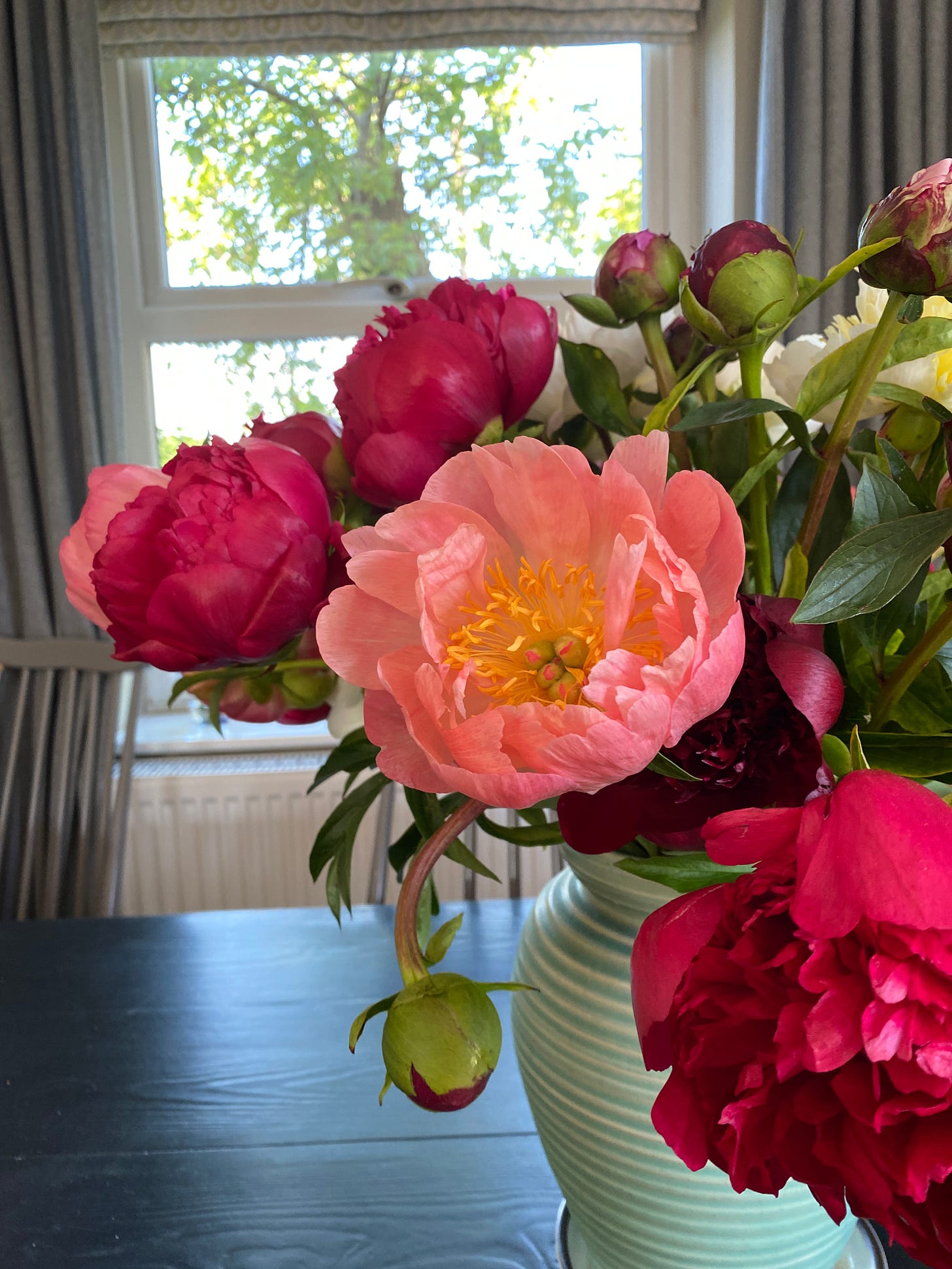
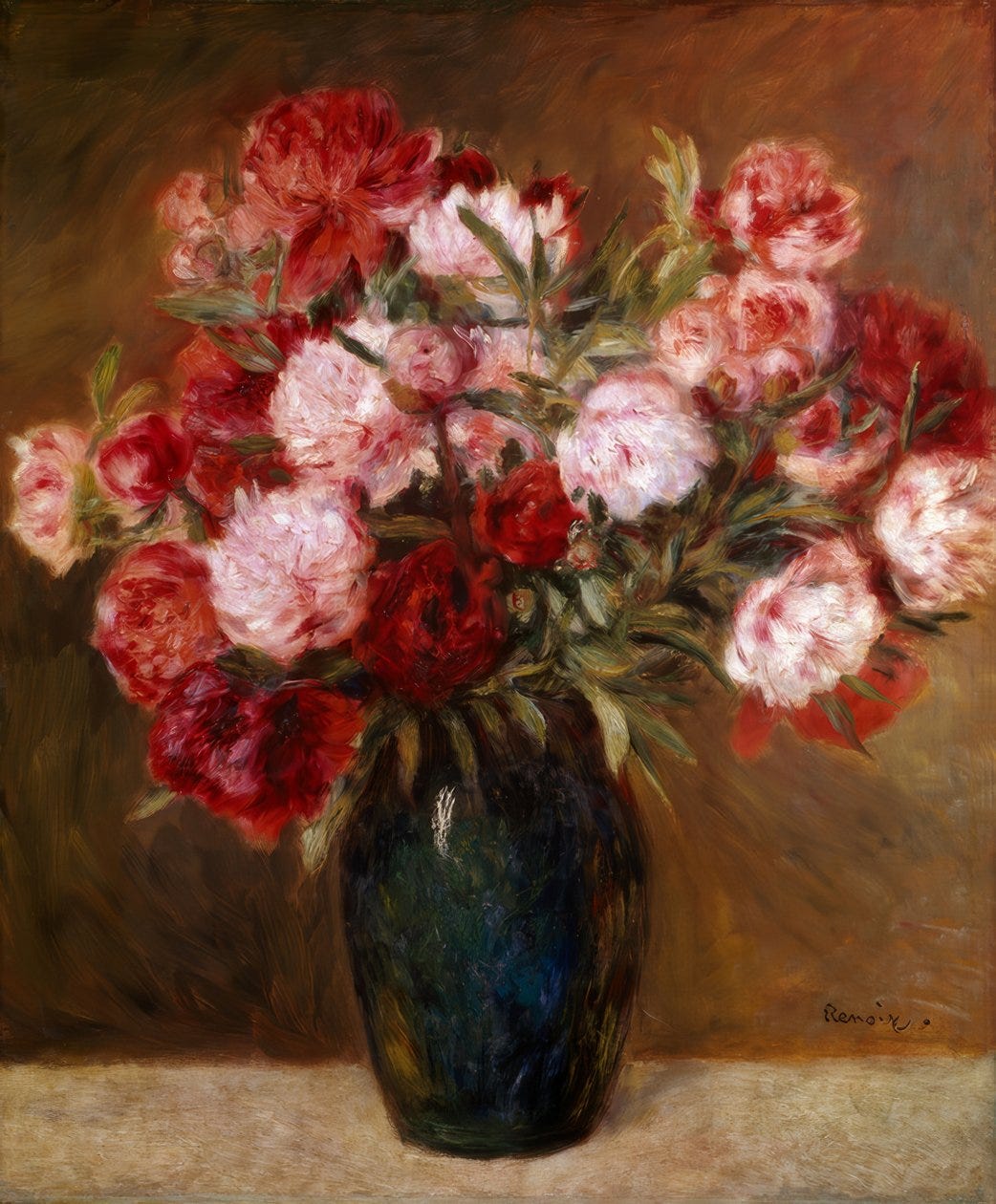

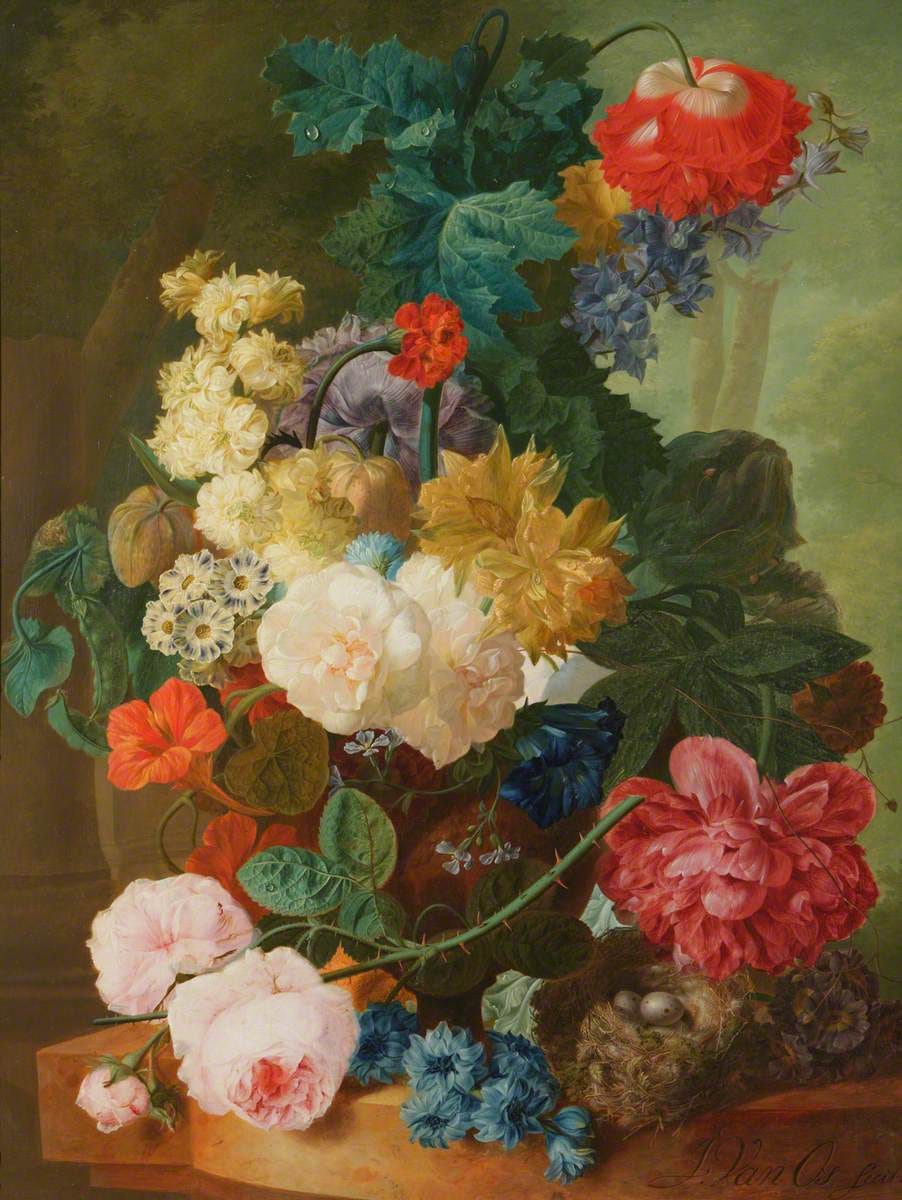

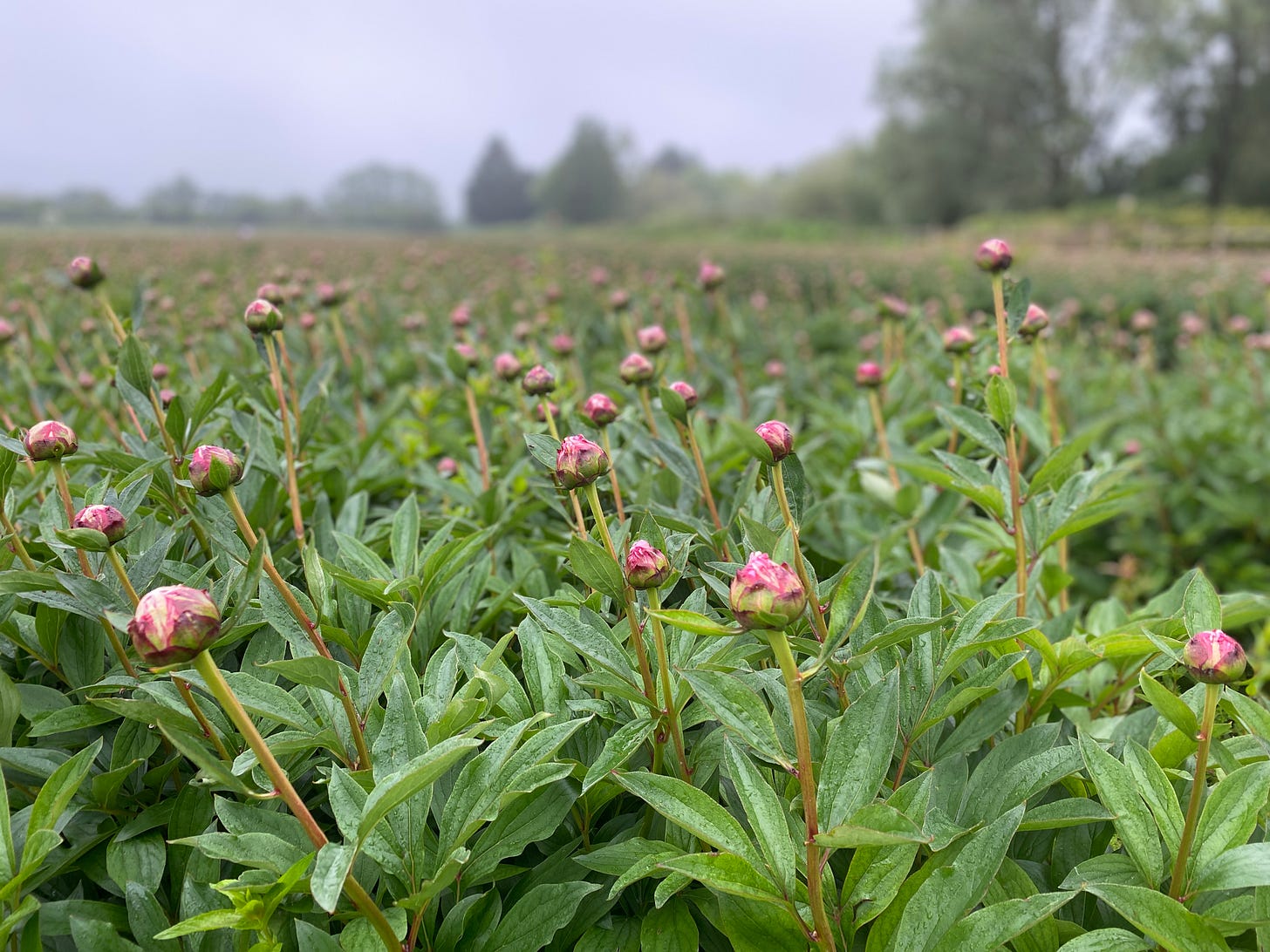
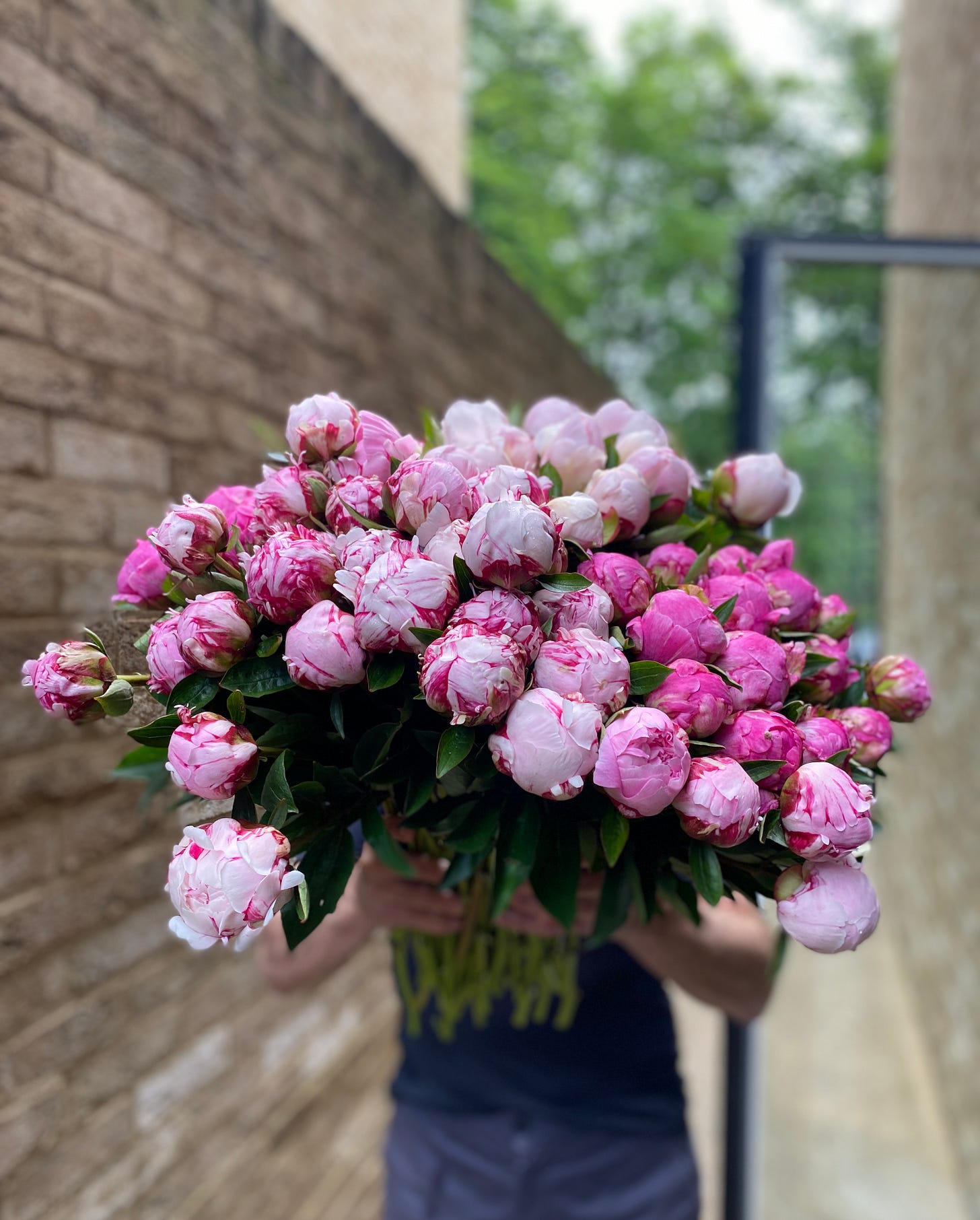



We inherited several borders of peonies from the previous owners of our house. Their blooming usually heralds a few days of wind and rain (as with the cherry blossom) that knocks the petals off and leaves them looking bedraggled and droopy. Good excuse to pick them before that happens......
Floors Castle in the Scottish Borders has a large bed of beautiful, massed peonies in all colours - surely for cutting, it must take quite a few vases of flowers to decorate a castle!
Have you ever seen peonies growing in the wild? it occurs naturally in Portugal and this year we could see it in bloom at the end of April.